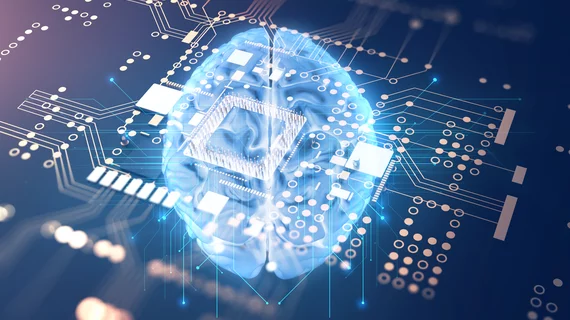In radiologist-rich US, AI’s usefulness as triage tool would be challenging, minimal, expert argues
For countries facing radiologist shortages, artificial intelligence could have “substantial” value in helping to triage patients. However, other geographies with less severe staffing challenges might encounter some headaches, along with minimal impact, when attempting to implement such a program.
That’s the upshot of a new analysis by one University of Pennsylvania imaging expert, published Saturday, Nov. 16, in Academic Radiology. AI triage could prove to be pivotal in some localities, reducing turnaround time of reports by cutting the time radiologists spend analyzing cases and then prioritizing those that are most urgent.
“In resource-deprived countries which face radiologist shortages, AI would be functioning as the absent radiologist. The added value to the patient and system could be substantial, and beyond timely generation of reports,” wrote Saurabh Jha, MD, an associate professor of radiology at Penn. AI, for instance, could also serve as a gatekeeper, detecting life-threatening abnormalities in images and then transferring positive cases to larger regional hospitals.
“In the United States, where radiologists are abundant, triage compliments rather than substitutes for radiologists, and in doing so its value is incremental,” Jha added later.
He used the example of patients requiring head CT scans for acute neurological conditions in the emergency department. Time is of the essence for such patients, with delayed treatment possibly leading to irreversible brain damage. Radiologists in these busy settings cannot simply read studies in the order they were completed, Jha noted. This is complicated further by the fact that certain life-threatening conditions often present with nonspecific symptoms, such as headaches.
AI could provide a crucial assist in helping to place CT scans that it deems positive at the top of the list and negatives at the bottom. However, this would likely lead to false positives/negatives while also sewing uncertainty for radiologists about their reads. Benefits of deploying an AI triage formula will depend on weighing the costs of errors in the algorithms versus benefits of shortening the queue, Jha wrote.
The field will need to determine answers to some of these questions by piloting AI triage in randomized control trials, asking radiologists to read studies with and without the tool. Likely measurable outcomes could include mortality within a certain timeframe, such as 30 days, or time to correct diagnosis/neurological evaluation. Radiologists’ satisfaction with using the tool would also be important to watch, as well.
“The best way to assess the impact of AI triage is by testing it in a [randomized control trial],” the analysis concluded, noting such an experiment “will be a challenging undertaking.” As such, researchers should wait until the algorithm “has achieved the minimum performance for radiologists to be comfortable experimenting with it” before beginning any rigorous reviews.

